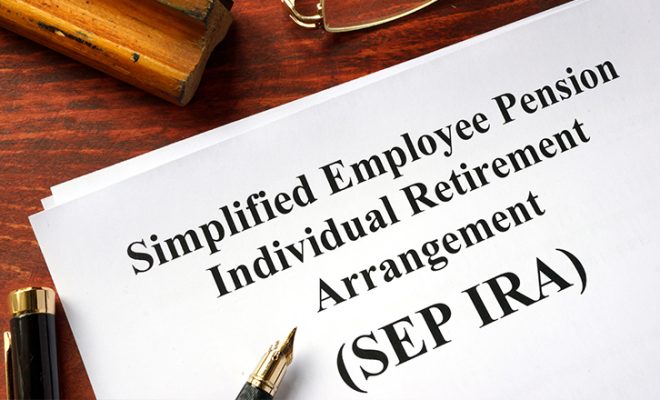Best Retirement Plans to Invest in for a Happy Retirement Life

Saving for retirement can seem confusing at times. For someone starting out on this journey, it may look like a laborious and lengthy task. However, if you pick the right savings instrument from the very start, you can enjoy this journey without any obstacles on the way. When picking the right retirement plan, you must look at factors, such as tax benefits, rate of interest, penalties on withdrawals, ability to counter inflation, and ease of contributions.
Based on all these factors and more, here are the best retirement accounts and plans to invest in:
- 401(k) account
This is a tax-advantaged plan that allows your money to grow tax-free. You can contribute money systematically and withdraw it without any penalties after the age of 59.5 years. However, if you decide to take your funds before this age, you will be subjected to a penalty and additional taxes. For 2020, you can contribute up to $19,500 in a year. You can contribute $25,500 if you are 50 years or older with a $6,500 catch-up contribution limit. In addition to this, your employer can also contribute up to $57,000 in combined employee and employer contributions. The amount is increased to $63,500 if you are 50 years or older. - 403(b) Plan
This is a tax-sheltered annuity plan. It can be used by employees working in organizations, such as churches, hospitals, public schools, charities, or other non-profit entities. The contributions are made pre-tax, and your money can grow tax-free. Just like the 401(k) account, a 403(b) plan also accounts for penalties and additional taxes if withdrawn before the age of 59.5 years. The maximum contribution limit for a 403(b) plan in 2020 is capped at $57,000 per annum. - 457(b) Plan
This is an employer-sponsored plan that can be used by state and local government employees. This is ideal for police officers, fire fighters, etc. The contributions for the account are made from your pre-tax income. However, unlike the first two accounts, there is no penalty if you withdraw funds before the age of 59.5 years. The limit for the account is set at $19,500 in 2020. There is also a catch-up contribution limit of $6,500 if you are 50 years or older. - Solo 401(k) Plan
Similar to the SEP IRA and the SIMPLE IRA, the solo 401(k) plan is also designed for entrepreneurs and business owners with no employees other than themselves and their spouse. The account allows up to $57,000 contributions in 2020 with an additional $6,500 catch-up contribution limit if you are 50 years or older. You can choose either the traditional or the Roth plan. In case of a traditional solo 401(k) plan, the contributions are made pre-tax whereas, in the Roth plan, the contributions are made with your after-tax money. - Individual retirement account (IRA)
An IRA is a tax-advantaged account. There are many variations of this account. As of 2020, you can contribute up to $6,000 or $7,000 if you are 50 years or older. Here are some types of IRAs:Traditional IRA:The money in this account is contributed pre-tax, so the contributions are not taxable. The taxes are charged on the withdrawals.Roth IRA: The contributions are made from the after-tax money. This implies that you do not have to pay any taxes on the withdrawals.
Spousal IRA: Under this account, a working spouse can contribute to the IRA of their non-working partner.
Rollover IRA: Just as the name suggests, you can roll over a 401(k) account or another IRA into a new rollover IRA.
SEP IRA: Known as Simplified Employee Pension IRA, this account caters to self-employed individuals or people with no employees.
SIMPLE IRA: The Savings Incentive Match for Employees IRA is an account meant for small businesses with a maximum of up to 100 employees.
- Employer funded pension plan
Also known as defined benefit plans, these plans are offered and contributed by the employer. Not all employers provide this plan, but if your employer does, then you can receive fixed benefits from it. However, you may lose out on it if you leave your job and your new employer does not provide the same plan. Therefore, it helps to have an alternate account in place. - Profit-sharing plans
Some corporate companies offer such plans to their employees. These plans work like a reward for their performance and efforts towards their jobs. In the case of profit-sharing plans, it is the employer who solely contributes to the plan. It also depends on the employer when they want to contribute to the plan, so the contributions may not always be consistent. These plans serve as an added income source for you without having to pay anything but just like employer funded plans, it is hard to depend on them for security. - Health Savings Account (HSA)
This is ideal for people covered under high-deductible health plans. HSA is a tax-advantaged account. Both the employer and the employee can make contributions to the plan. As of 2020, the contributions limits are set at $3,450 for an individual and $6,900 for a family. There is an additional contribution limit of $1,000 if you are 55 years or older. However, if you withdraw the funds for non-medical expenses, you can be subjected to taxes and a 20% penalty. But you can withdraw funds without a penalty if you are 65 years or older. - Cash-value life insurance plan
Cash-value insurance plans such as variable life plans, whole life plans, universal life plans, and variable universal life plans are offered by many employers. These plans offer death and income benefits. But it is important to pay all premiums on time to avail maximum benefits of such plans. Moreover, these plans are more suitable for people who have maxed out contributions on all other retirement plans. - Guaranteed income annuities (GIAs)
GIAs are annuity plans that can be used to create a steady flow of income in retirement. These plans offer lump sum payments as well as monthly income options. The tax is paid only on the earnings if you invest in an annuity plan with your after-tax dollars. However, if you opt for an annuity with an IRA, then you will have to pay tax on withdrawals.
To sum it up
There are many options to save for retirement, but the right one can be subjective for each individual. Your income, goals, and job will determine the ideal plan for you. However, it helps to keep yourself updated about the options ahead of you, so that you can make an informed decision. If you are still not sure about the best retirement accounts for you, you can get in touch with Financial Advisors and seek professional guidance on the matter.










